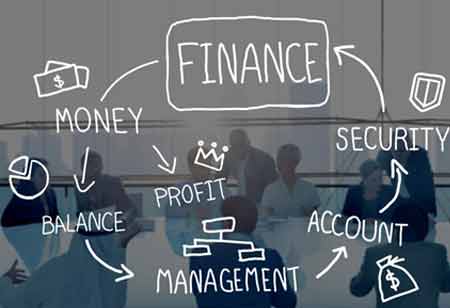CLOSE
Specials
- Trading Solutions APAC
- Wealth Management MENA
- CPA Firms Canada
- Financial Risk Management APAC
- Investment Banking APAC
- Corporate Advisory APAC
- Regtech APAC
- Escrow Services
- Digital Banking Latam
- Investment Advisory APAC
- Treasury Management Europe
- RegTech Europe
- Financial Risk Management Europe
- Mortgage Broker
- Financial Licensing Europe
- RIA Advisory Europe
- FinTech Canada
- Financial Asset Management APAC
- Financial Health Europe
- Trading
- Investment Services Europe
- Lending Mangment Latam
- Payment Solution Europe
- Broker Dealer Firms Canada
- Alternative Investments Canada
- Financial Fraud
- Investment Management Latam
- Investment Banking Canada
- Lending Management
- Payment Solution
- Proprietary Trading Europe
- Wealth Management
- FinTech
- Financial Brokerage Firm APAC
- Investment Advisory Europe
- Claim Adjusting
- Claim Adjusting APAC
- Mergers and Acquisitions Consulting APAC
- Equipment Financing
- CPA Firms
- Mergers and Acquisitions Consulting Canada
- Investment Services
- Valuation Services Canada
- Wealth Management APAC
- Broker Dealer Firms
- Debt Collection Agencies
- Mergers and Acquisitions Consulting
- FinTech Europe
- Fintech Latam
- Financial Planning / Retirement
- Investment Management
- Financial Compliance
- Payment and Card Latam
- Financial Marketing
- Investment Services Latam
- Digital Insurance Europe
- Alternative Investments
- Trading Solutions Europe
- Tax Advisory Canada
- Mergers and Acquisitions Consulting Latam
- Wealth Management Latam
- Digital Banking Europe
- Business Loan
- Financial Portfolio Management Canada
- Financial Restructuring Europe
- Mergers and Acquisitions Consulting Europe
- Wealth Management Europe
- Debt Collection Agencies Europe
- CFO Services
Weekly Brief
×Be first to read the latest tech news, Industry Leader's Insights, and CIO interviews of medium and large enterprises exclusively from Financial Services Review
Thank you for Subscribing to Financial Services Review Weekly Brief
Next-Gen Debt Collection: Strategies for Improved Customer Engagement
AI and automation in debt collection streamline processes, improve customer interaction, and enhance payment tracking for more efficient recovery.

By
Financial Services Review | Friday, August 22, 2025
Stay ahead of the industry with exclusive feature stories on the top companies, expert insights and the latest news delivered straight to your inbox. Subscribe today.
Fremont, CA: Debt collection has long been an essential yet challenging part of financial management. As businesses adapt to changing economic environments, traditional debt collection methods are increasingly proving inadequate. The evolution of technology and shifting consumer expectations have paved the way for more effective and ethical strategies that prioritize customer experience while maintaining financial objectives.
Companies are moving toward innovative debt collection approaches that improve recovery rates, enhance client relationships, and safeguard reputations. These strategies encompass digital tools, customer-centric practices, and advanced analytics to create a more efficient, responsive, and respectful process.
Leveraging Technology for Seamless Interactions
With artificial intelligence (AI) and automation, debt collection has become a faster, more efficient process. Automation allows businesses to redirect their resources towards more strategic tasks such as follow-ups, reminders, and data entry. AI-powered chatbots are also revolutionizing communication by providing 24/7 customer interaction.
This ensures that individuals can address their concerns or make payments conveniently, reducing frustration and increasing the likelihood of timely debt recovery. Moreover, automated systems can accurately track payment histories, ensuring that businesses never miss an opportunity for follow-up or correction.
Digital payment platforms also enhance the ease with which customers can settle their debts. Allowing multiple payment methods, such as mobile wallets, credit cards, and direct bank transfers, gives customers flexibility and reduces friction in the payment process. By integrating these platforms into debt recovery workflows, businesses can streamline operations while fostering a sense of convenience for the consumer.
Personalizing Debt Collection Experiences
Consumers are more inclined to engage when they feel understood and valued. Traditional debt collection approaches often involve impersonal and sometimes aggressive tactics. In contrast, modern strategies focus on empathy and personalization, recognizing the importance of context and individual circumstances. By tailoring communication strategies based on the customer's history, preferences, and financial situation, companies can foster better relationships and increase the chances of recovery.
Personalization extends beyond just adjusting messaging; it also involves providing clear options for repayment. Whether through tailored payment plans or flexible terms, offering a solution that aligns with the consumer's financial capacity can improve the likelihood of successful debt recovery. This customer-first approach also helps preserve relationships and brand reputation, which is especially important for businesses in competitive markets where customer loyalty is crucial.
Utilizing Data Analytics for Smarter Decisions
Advanced data analytics is the most powerful tool in modern debt collection strategies. By analyzing patterns in payment behavior, businesses can segment customers more effectively and tailor their approaches accordingly. Predictive analytics allows companies to identify which accounts are most likely to pay and which may require more intensive efforts. This strategic segmentation minimizes wasted resources and enables more focused, targeted collection efforts.
Moreover, analyzing past customer interactions provides valuable insights into communication preferences, responsiveness, and payment behavior. This data allows businesses to fine-tune their outreach strategies and decide the best times and methods to contact individuals. The result is a more efficient and data-driven debt recovery process that increases collection rates and reduces costs by focusing on high-value accounts.

Copyright © 2025 Financial Services Review. All rights reserved






